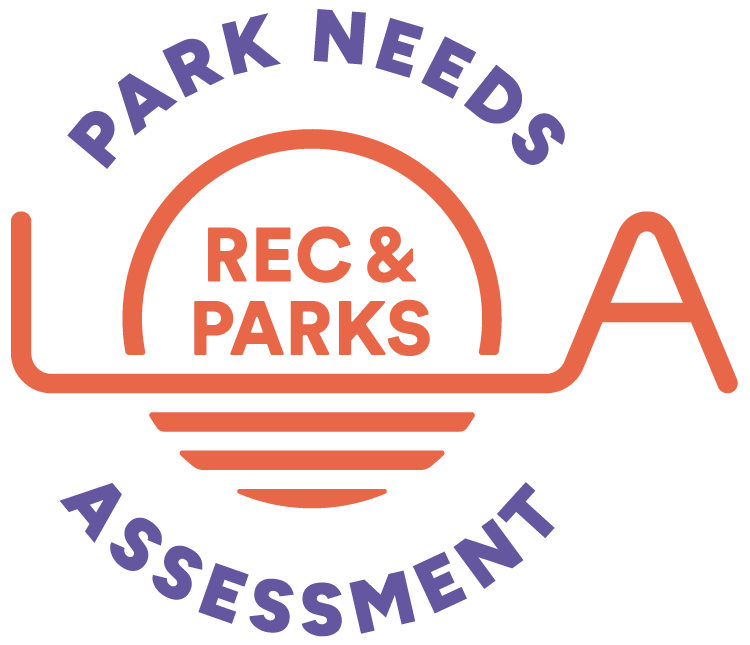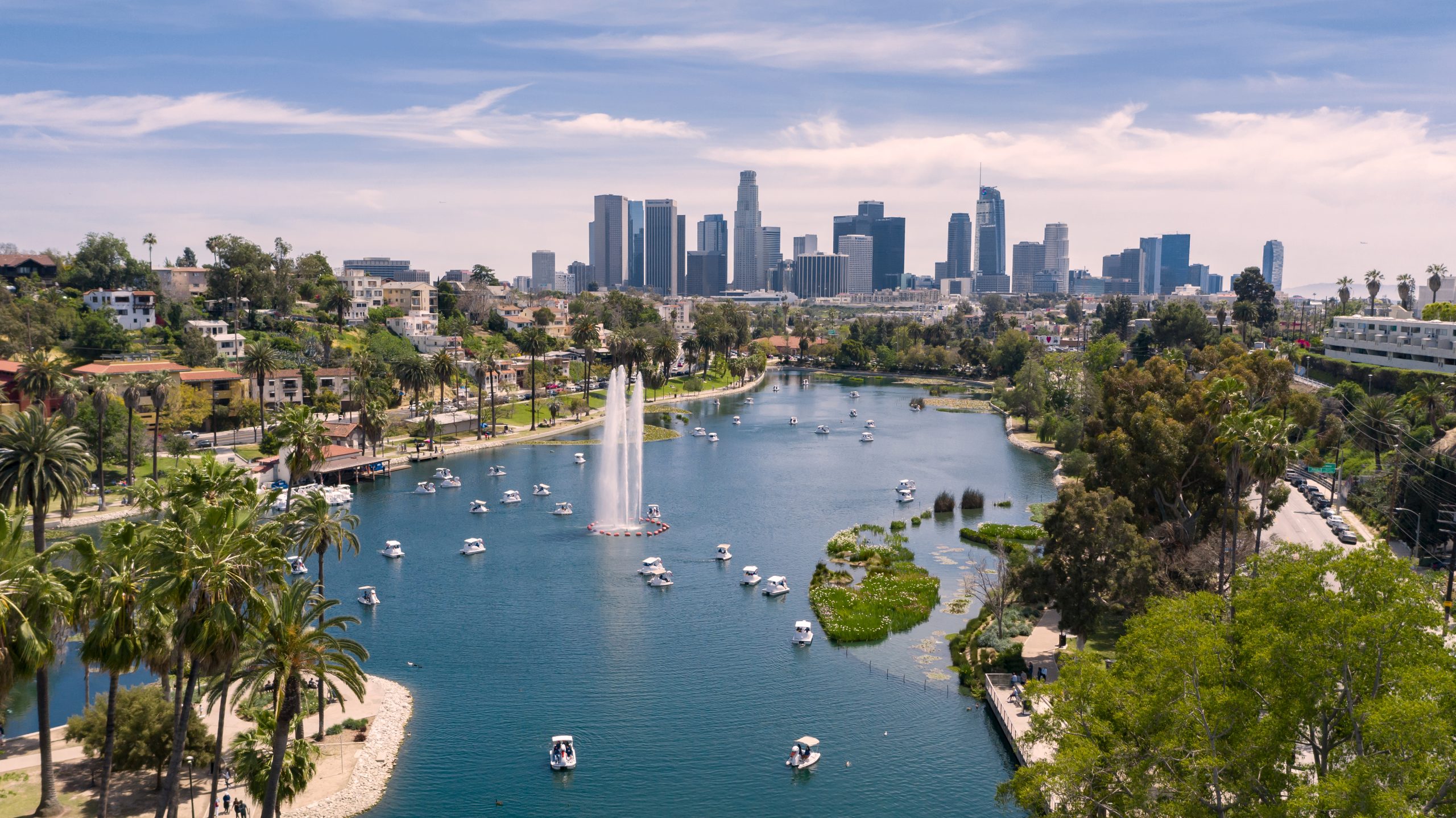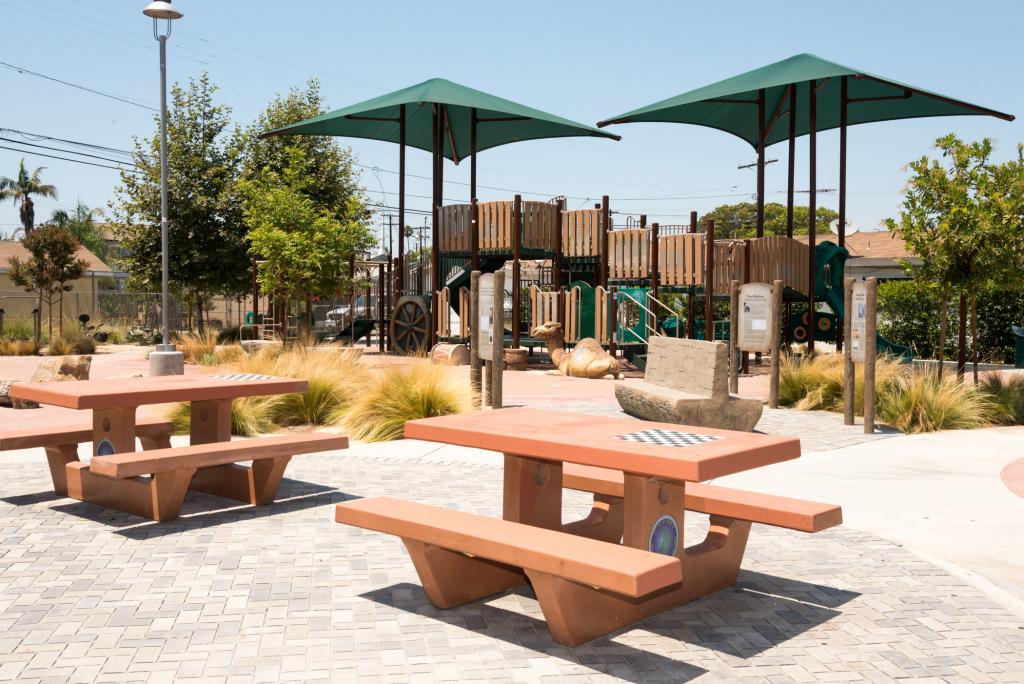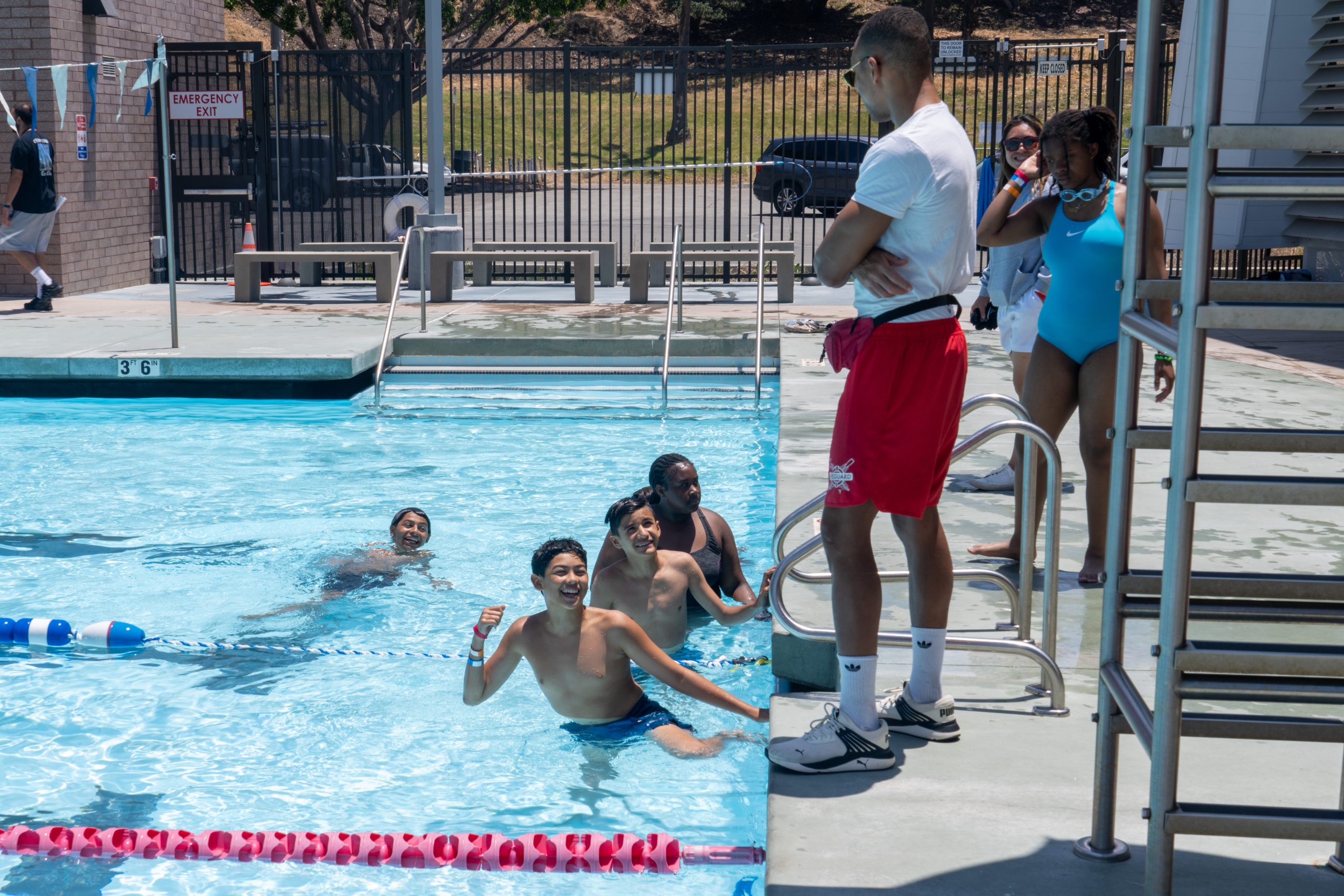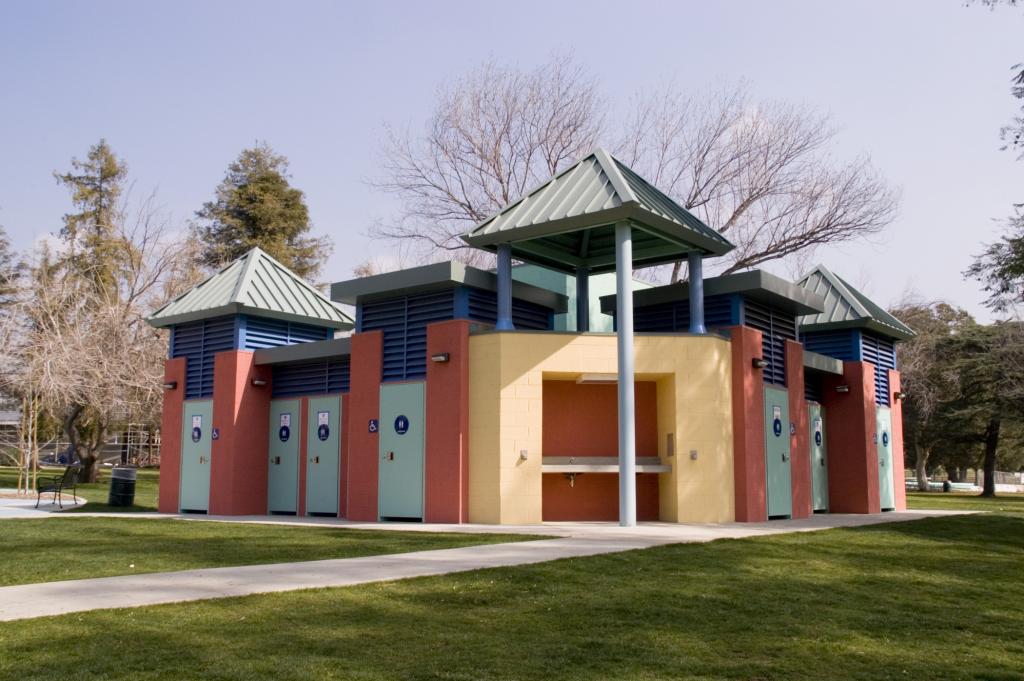A vital component of the Los Angeles Parks Needs Assessment is an evaluation of cost and funding, laying out a comprehensive framework to understand the financial investment required to maintain, enhance, and expand the city’s parks and recreational amenities. Planning-level cost estimates for new facilities, maintenance, and staffing needs in addition to innovative funding strategies, are outlined as a roadmap to a resilient, equitable, and thriving Los Angeles park system.
Planning-Level Cost Assumptions and Estimates
The PNA includes a rough order-of-magnitude estimate of the dollar amount needed to maintain, refresh, and build new parks and recreational amenities, facilities, and infrastructure across the city over the next 25 years as well as meet staffing and operational needs.
METHODOLOGY
The PNA’s cost estimate is based on assumed costs for new parkland, construction of new amenities, replacement of existing amenities, repair of existing amenities, and maintenance of existing amenities. These assumed costs are based on:
Costs were developed for the over 30 amenities inventoried in RAP’s annual Park Conditions Assessment, as well as other priority park facilities and landscapes that impact the overall quality and character of the parks system. The elements are categorized into:
There are costs associated with maintaining, completing a minor refresh of, completing a major refresh of, or adding each of these elements.
Maintain
An amenity is in good condition, is fully functional, and does not need repairs. The amenity should be maintained to keep it in a good state of repair. Amenities in good condition encourage park use.
Minor Refresh
An amenity is in fair condition and is functional but needs minor or moderate repairs. Some elements of the amenity need to be refreshed. Amenities in fair condition can still be used, but may slightly discourage park use.
Major Refresh
An amenity is in poor condition, is largely or completely unusable, and requires major repairs to be functional. Amenities in poor condition discourage park use.
New Facility
A new facility must be built to meet a need in the overall system.
Types of Cost, Assumptions, and Approach
Capital Estimates
In the overall cost matrix, standardized costs are applied to the actual conditions of park amenities at each park site, as assessed by RAP, to arrive at project costs citywide to the year 2050. For amenities or elements that do not have a specific assessment, such as individual benches, the cost matrix includes estimates for current and future needs over the next 25 years. For new facilities, the proposed counts are based on the proposed level-of-service (LOS) standards for RAP. (See Chapter 13: Level of Service Standards.) For example, if RAP wants to increase its LOS for basketball courts to match peer cities, the number of new courts needed to meet the new LOS standard is added to the new courts column. This is also true for the total acres of new parks desired. In the case of new parks, new amenity costs were applied to each of the 36 prospective park sites identified using the “Per Square Mile” tool (See Chapter 8: Site Prioritization.).
In addition to amenities, elements such as water and power support infrastructure, native habitat restoration or creation, and water bodies are considered in the cost matrix based on acreage or age of park.
The matrix includes soft costs, such as design fees, for each of these projects as well. Soft costs for small projects are generally higher by percentage than large projects. This is due to the fact that regardless of the scale of the project, a certain level of project management and administrative work is required. For the purposes of this estimate, soft costs were averaged to 12%.
AMENITIES, HABITAT, AND SOFT COSTS ARE INCLUDED IN OVERALL COST CALCULATIONS.
Personnel Estimates
- Increasing capacity and level of service by 1.5 times (150%) to meet anticipated demand and elevate overall service delivery.
- Returning staffing to RAP’s prior, known peak in FY2008 (139% for FTEs, 258% for PTEs). RAP has not returned to pre-recession staffing levels. Restoring full-time employee counts to the FY2008 peak would require a 139% increase. Restoring part-time employee counts would require a 258% increase.
- Increasing staff per acre to align with peer systems (200%). Based on the average staff per acre against peer park systems, RAP would need to increase staff capacity by 200% to meet the service level of peers.
Expense Estimates
Expenses are based on an applied salary-to-expense ratio of 20%, based on the historical average from RAP’s FY2015–FY2025 budgets.
Based on this initial approach, RAP would need to increase its operating budget by 75% to increase staff capacity to a level more consistent with prior service levels, desired service quality, and peers.
RAP COULD RESTORE STAFFING LEVELS, A HIGHER LEVEL OF SERVICE AND ALIGN CAPACITY TO PEERS BY INCREASING ITS OPERATING BUDGET BY 75%.
Personnel and Expense Estimate Summary
| Estimated Budgets | Full-Time Salaries | Part-Time Salaries | Misc. Salaries | Total Salary Budget | Expenses | Total Operating Costs | % Change from FY25 |
|---|---|---|---|---|---|---|---|
| Existing FY2025 | $126M | $54M | $4M | $184M | $39M | $223M | 0% |
| 1. Increase Capacity to Provide A Higher Level of Service | $190M | $82M | $5M | $276M | $58M | $335M | 50% |
| 2. Staffing Consistent to Prior Staffing Levels | $176M | $140M | $7M | $323M | $68M | $391M | 75% |
| 3. Increase Capacity to Align to Peers | $253M | $109M | $7M | $368M | $78M | $446M | 100% |
| Average | $206M | $110M | $6M | $322M | $68M | $390M | 75% |
All costs are in 2025 dollars based on 2025 staff salaries and expenses. These estimated operating costs do not include City General Fund Reimbursements, trash collection, or utilities.
Source: HR&A Analysis of data provided by RAP and Trust for Public Land City Park Facts. Benchmarking peer cities rely on individual City Budgets from FY2023.
Operations and Maintenance Estimates
Staff salaries on the maintenance and construction teams constitute a significant portion of RAP’s operations and maintenance costs. Currently, the park conditions assessment, RAP staff, and community members all point to poor maintenance conditions in a high percentage of the City’s parks. This is largely due to reduced numbers of operations and maintenance staff and also due to the ever-expanding scale of the park system. In a growing city like LA, the operations and maintenance budget of the park system also needs to grow year to year. Over the past 25 years, this budget has not kept up with inflation or the growth of the system.
Over the past 25 years, RAP’s operations and maintenance budget has not kept up with inflation or growth of the system.
Escalation
One of the most important elements of long-range cost planning is considering escalation year to year. If underestimated, projects further into the future of the PNA time horizon will be underfunded. The rate of escalation depends largely on market conditions. While average years may be in the 4-5% range, during the COVID-19 pandemic and in recent years escalation rates for capital construction costs rose very quickly at rates approaching 10-12%. Escalation forecasts for 2025–2026 in the LA market are 6-9%, driven in part by fire rebuild efforts and events-related development (World Cup, Superbowl, Olympics) before stabilizing for 2027–2029 in the 3-6% range.1Dharam Consulting, “Los Angeles Construction Cost Note,” May 2025, 6.
Cost Totals (without Escalation)
A total budget takes into account facility conditions and deferred maintenance, desired new amenities, staffing needs, and operations and maintenance needs. Some costs recur annually, such as staffing. Other costs, such as new projects, are one-time costs that require ongoing operations and maintenance costs. The total budget can be broken down into one-time and annual costs.
One Time Capital Need (in 2025 Dollars)
Annual Operating Needs
With such large goals, it is helpful to further break these costs down into component parts to better explore funding measures or strategies and to prepare for department budgeting.
| Additional Lenses to Explore Costs | |
|---|---|
| Total for 36 new "Per Square Mile" parks at approximately 3 acres, including land acquisition | $1.3B |
| Total needed to address the top 100 prioritized sites (based on a per acre average of the system cost) | $724M |
| Total needed to address the 25 first priority sites (based on a per acre average of the system cost) | $55.3M |
| Total needed to address the top 15 prioritized sites (based on a per acre average of the system cost) | $24.7M |
This estimated addition of $500M annually would enable RAP to meet growing needs in staffing, operations and maintenance, and General Fund reimbursements for the Los Angeles park system, and is equivalent to 4% of the City of LA’s Fiscal Year 2025 operating budget.
Sources
- 1Dharam Consulting, “Los Angeles Construction Cost Note,” May 2025, 6.
